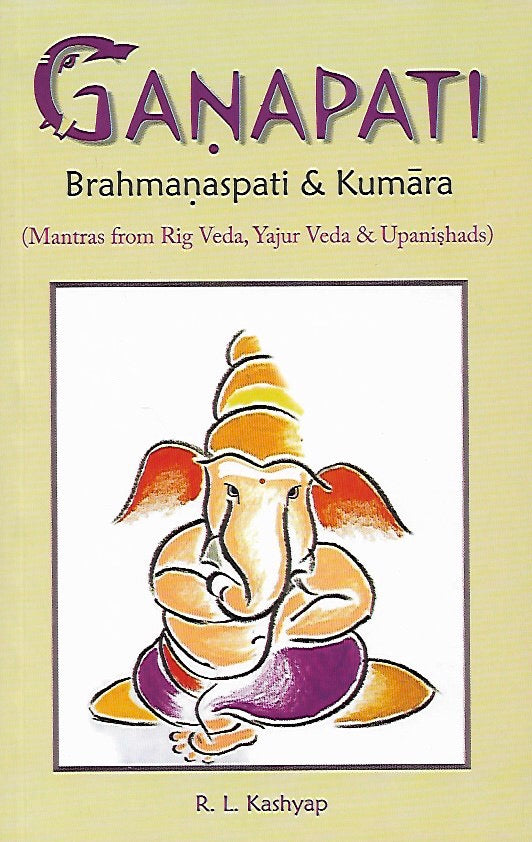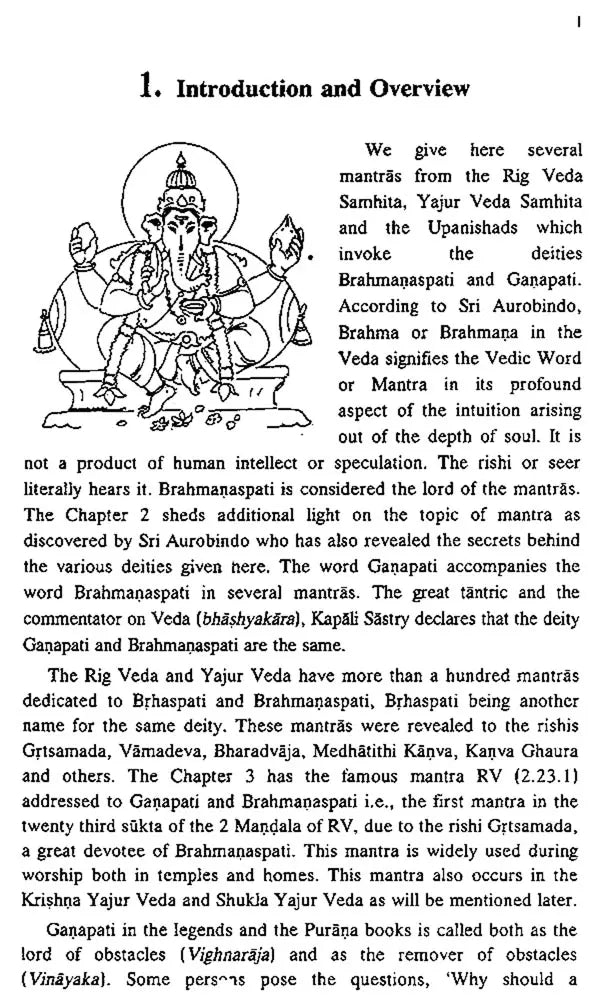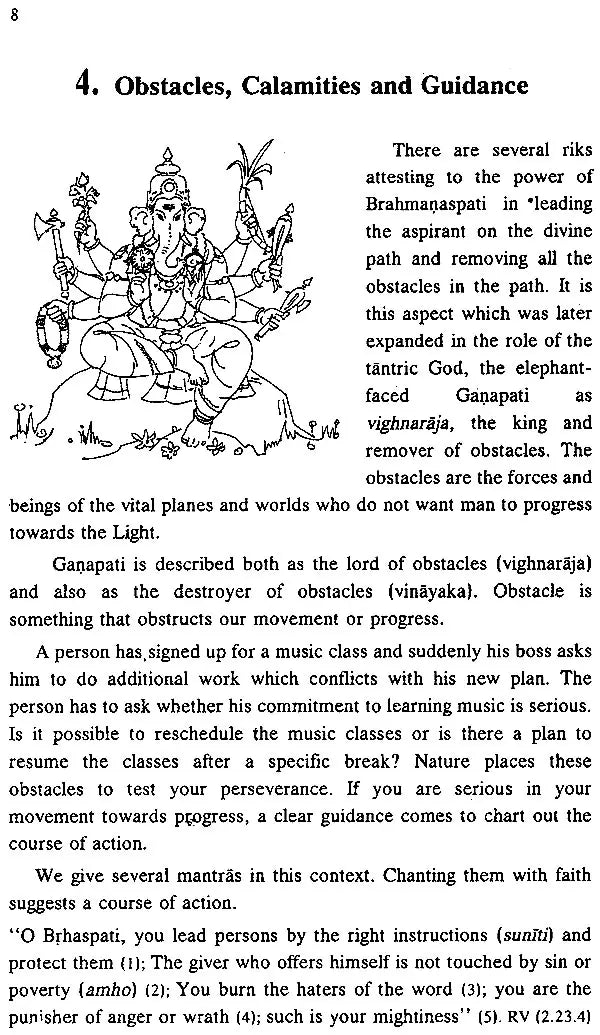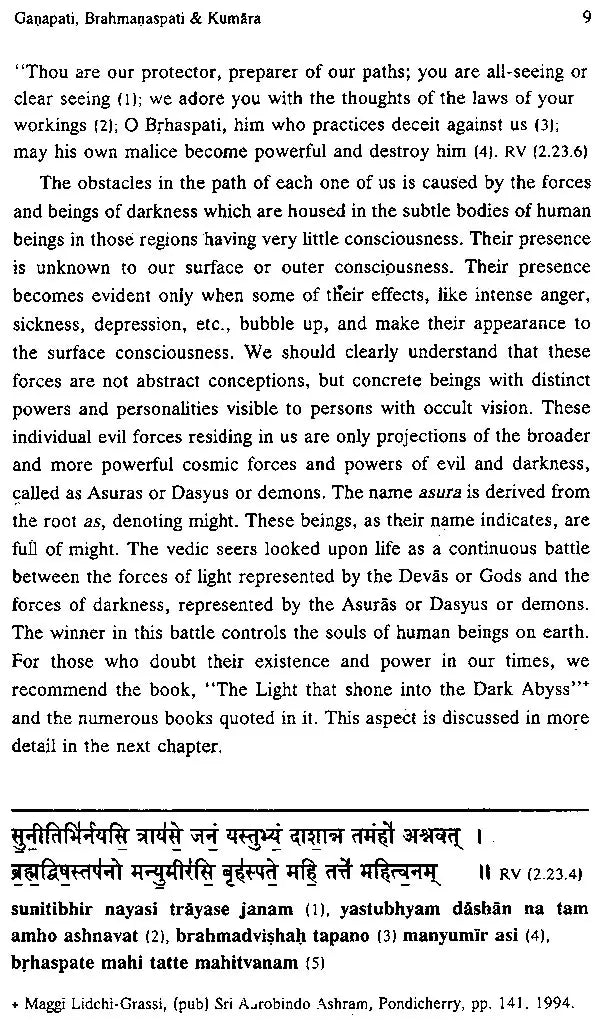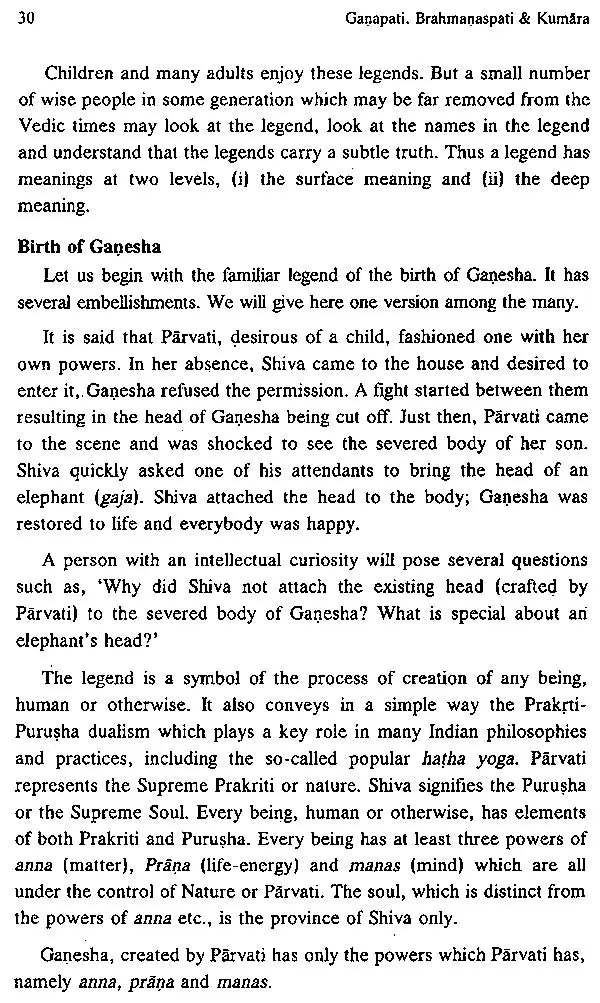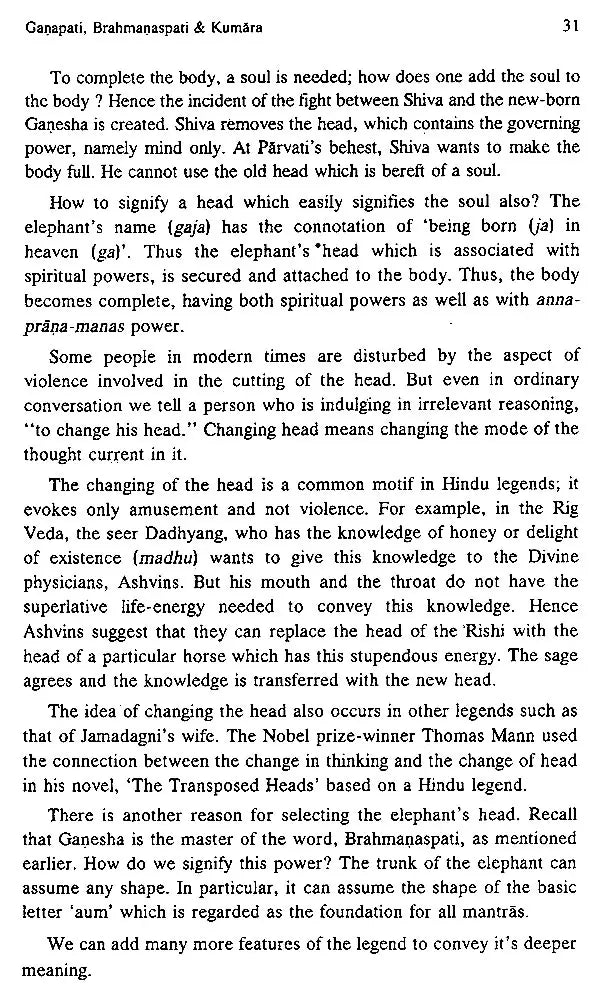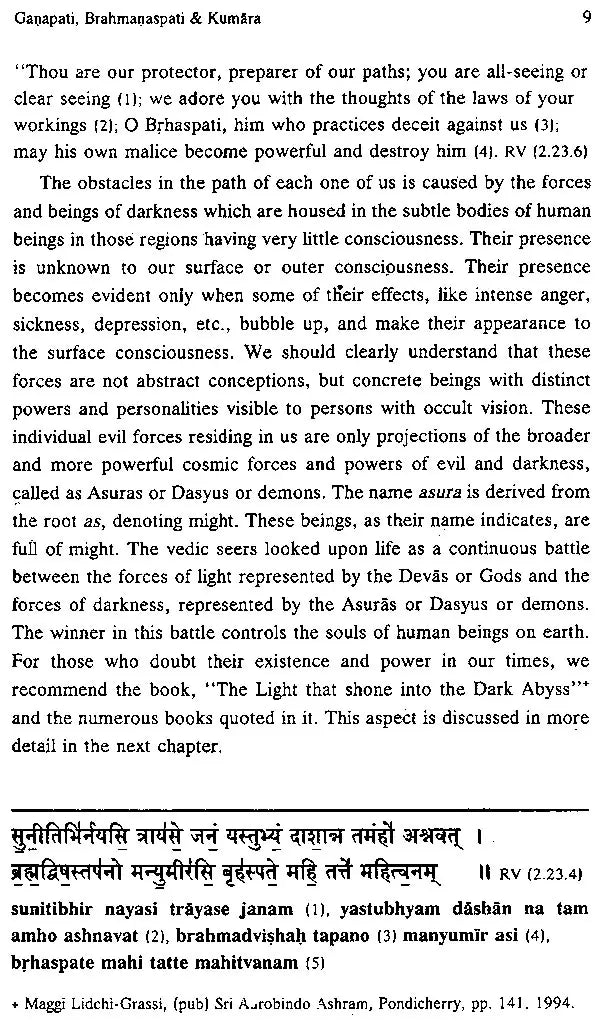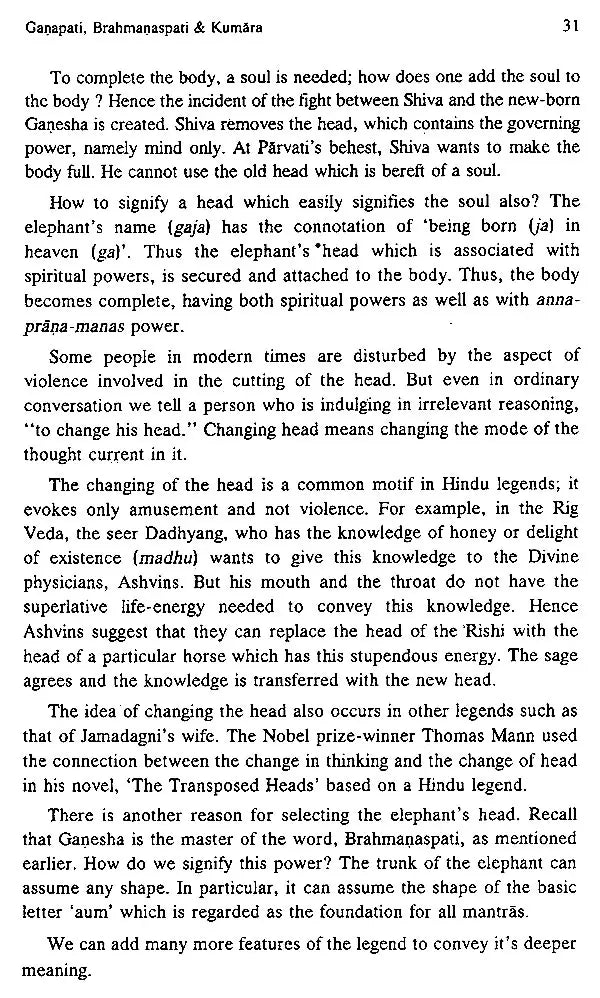Introduction
We give here several mantras from the Rig Veda Samhita, Yajur Veda Samhita and the Upanishads which invoke the deities Brahamnaspati and Ganapati. According to Sri Aurobindo, Brahma or Brahmana in the Veda signifies the Vedic Word or Mantra in its profound aspect of the intuition arising out of the depth of soul. It is not a product of human intellect or speculation. The rishi or seer literally hears it. Brahmanaspati is considered the lord of the mantras. The chapter 2 sheds additional light on the topic of mantras as discovered by Sri Aurobindo who has also revealed the secrets behind the various deities given here. The word Ganapati accompanies the word Brahmanaspati in several mantras. The great tantric and the commentator in Veda, Kapali Sastry declares that the deity Ganapati and Brahmanaspati are the same.
The Rig Veda and Yajur Veda have more than a hundred mantras dedicated to Brhaspati and Brahmanaspati, Brhaspati being another same for the same deity. These mantras were revealed to the rishis Grtsamada, Vamadeva, Bharadvaja, Medhatithi Kanva, Kanva Ghaura and others. The chapter 3 has the famous mantra RV addressed to Ganapati and Brahmanaspati i.e., the first mantra in the twenty third sukta of the 2 Mandala of RV, due to the rishi Grtsamada, a great devotee of Brahmanaspati. This mantra also occurs in the Krishna Yajur Veda and Shukla Yujar Veda as will be mentioned later.
Ganapati in the legends and the Purana books is called both as the lord of obstacles and as the remover of obstacles. Some persons pose the questions, ‘Why should a benevolent deity like Ganapati cause obstacles in the devotees’ life? Veda gives the clarification for this question. Ganapati’s role in providing guidance and removing obstacles is described in Chapter 4. This Chapter lists mantras for saving us from calamities.
Chapter 5 gives several mantras connected with the battle between Brhaspati and other deities against the cosmic evil powers called as Vrita and Vala. Vala covers the knowledge and prevent it from reaching human beings; Virtra prevents the divine dynamical energies from reaching human beings. The tendency of human being towards the path of evil is caused by these forces. Their associates are the famous group of six enemies (anger, greed, delusion, arrogance, jealousy and lust)
. In the poplar prayers, people pray to Ganapati for the grant of riches. The Vedic mantras take a broader view of riches which including both physical wealth and psychological felicities such as happy thoughts for all, calmness etc. Chapter 6 gives the relevant mantras. In one of the mantras, the prayer is for dravina which is usually rendered as money. But if we look at all the epithets used for dravina, it can only mean divine glory or pre-eminence in spiritual knowledge, as noted by Aitareya Brahmana book.
Chapter 7gives the mantras for giving relief to devotees from rna or debt. Veda declares that the god feels an obligation educate and lead human beings. Rna is also interpreted as bondage.
According to both Rig Veda and Yujar Veda, the foundation of our existence is bliss or honey. Chapter 8 gives the mantras for invoking Brahmanaspati for releasing the bliss in our life.
As mentioned in our earlier books that Agni is the power of Divine Will, and Indra is the power of Divine Mind and actions. The questions arises, ‘Is there any mention of soul-power in Veda?’ The answer ‘yes’ and the deity of the soul-power is Brhaspati. This topic is discussed in detail in Chapter 9. Specifically there are several mantra discussed in detail in Chapter 9. Specifically there are several mantras from Yujur Veda which refer to the activating of the mantra power from the centre of inconscient in the subtle body of a human being which is called as Muladhara Chakra in tantric literature. These mantras indicate the connection between the Veda and Trantra regarding Ganapati. Purana does not deal with this topic.
Chapter 10 deals with the creation at all cosmic level.
Chapter 11 gives the symbolism behind the well-known legends connected with the birth of Ganapati. We discuss the connection between the legends and their symbolism. The outer meaning of a legend is easily understandable and is also entertaining. Hence it is easily preserved from generation to generation. But the legend has a deeper meaning which is apparent only to the seekers.
Chapter 12 discusses the symbolism behind certain aspects of the murti of Ganapati, especially the connection to the sacred single syllable mantras like Om or Lam.
In the folk-lore, Ganesha has a younger brother known as Kumara or Shanmugha. Agni in the Veda is the prototype of Kumara in Purana. The insights of Sri Aurobindo and Sri Kapali Sastry on this topic are provided in chapter 13.
Chapter 14 gives the Ganapati Upanishad which is one of the well-known 108 Upanishads. It is widely used in worship. We give a brief background of these 108 Upanishads also.
Chapter 16 refutes some of the popular misconceptions about Ganapati. Several popular books on Ganapati mentioned in Chapter 16 claim that Ganapati is a Dravidian God who was later adopted by the invading Aryans. These books do not give any sources of support for her claims. Most educated Indians state that they read in their school textbooks about the Aryan Invasion of India. But the substantial research done during the last 25 years in several fields like archaeology has shown that the ‘Aryan Invasion Theory’ is a massive falsehood. The same research has shown that the statements such as, “Ganapati is a Dravidian God”, are also incorrect. Chapter 16 discusses these aspects and other related unsupported conjectures, giving the relevant quotations and the references for further reading.
